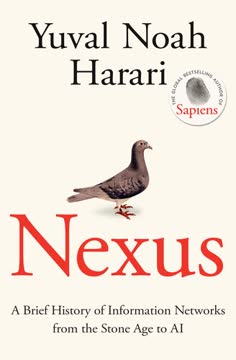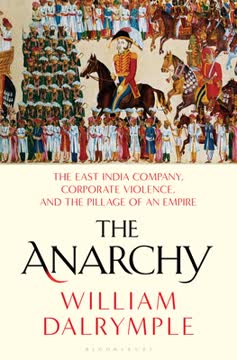نکات کلیدی
1. هند: موتور فراموششدهی تمدن
یادگیریهای هندی، بینشهای مذهبی هندی و ایدههای هندی از بنیادهای حیاتی جهان ما به شمار میروند.
تصورات تاریخی نادرست. برای مدت طولانی، نقش هند بهعنوان یک مرکز بزرگ تمدنی نادیده گرفته شده و تحتالشعاع تمرکز بر یونان و روم در غرب و چین در شرق قرار گرفته است. این امر تا حدی به تعصبات دوران استعمار و تمایل به مطالعه تاریخ در سیلوهای منطقهای جداگانه برمیگردد.
تأثیر هند:
- هند بهمدت بیش از یک هزاره، صادرکنندهی عمدهای از فرهنگ، ایدهها و فناوریهای خود بود.
- ادیان، فلسفهها، علوم و هنرهای هندی در سراسر آسیا گسترش یافت و زندگی بیش از نیمی از جمعیت جهان را شکل داد.
- مفاهیم ریاضی حیاتی مانند صفر و سیستم دهدهی در هند به وجود آمدند و پایهگذار سیستم عددی مدرن ما شدند.
بازپسگیری جایگاه هند. زمان آن رسیده است که تأثیر عمیق و تحولآفرین هند بر تاریخ جهان را به رسمیت بشناسیم و آن را در کنار دیگر تمدنهای بزرگ باستانی قرار دهیم. این امر نیازمند بازنگری در روایتهای تاریخی و رویکردی یکپارچهتر به مطالعهی ارتباطات جهانی است.
2. جادهی طلایی: یک بزرگراه دریایی
بهلطف وزش بادهای موسمی آسیا، هند در مرکز یک شبکه بزرگ از جادههای دریایی قابلنقل و مسیرهای تجاری دریایی قرار دارد.
بادهای موسمی بهعنوان کاتالیزور. بادهای پیشبینیپذیر موسمی اقیانوس هند به ملوانان هندی این امکان را داد تا مسافتهای وسیعی را طی کنند و یک بزرگراه دریایی ایجاد کنند که هند را به آفریقا، خاورمیانه و آسیای جنوبشرقی متصل میکرد. این شبکه بهمراتب کارآمدتر از مسیرهای زمینی بود.
مسیرهای تجاری:
- مسیرهای غربی هند را به دریای سرخ، مصر و امپراتوری روم متصل میکرد.
- مسیرهای شرقی هند را به آسیای جنوبشرقی و در نهایت چین پیوند میداد.
- مسیرهای دریایی سریعتر، ارزانتر و ایمنتر از مسیرهای زمینی بودند.
قدرت اقتصادی. تجارت در جادهی طلایی ثروت عظیمی را به هند آورد و آن را به یک مرکز اقتصادی بزرگ تبدیل کرد. نویسندگان رومی از خروج طلا به هند ابراز تأسف میکردند و آن را "چاه فلزات گرانبهای جهان" مینامیدند. این ثروت به رشد شهرهای هندی و حمایت از هنر و علم کمک کرد.
3. تولد و گسترش جهانی بودیسم
از این لحظهی روشنایی، بودا در شمال هند به گشتزنی پرداخت و ایدههای بنیادی خود را که همهچیز ناپایدار است و خواستهها تنها لذتهای زودگذر به ارمغان میآورند، آموزش داد.
آموزشهای بودا. سیدارتا گوتاما، بودا، بهدنبال راهی برای پایان دادن به رنج بشری بود. او راه میانه را آموزش داد، راهی از اعتدال بین خودراضیگری و خودآزاری، و بر اهمیت محبت، بیتوجهی و مدیتیشن تأکید کرد.
نقش آشوکا:
- تبدیل آشوکا به بودیسم منجر به گسترش سریع آن در هند و فراتر از آن شد.
- آشوکا مبلغانی به سریلانکا، آسیای جنوبشرقی و حتی دنیای هلنیستی فرستاد.
- او همچنین استوپاها و صومعههایی ساخت و بودیسم را بهعنوان یک دین پانهندی ترویج کرد.
سفر بودیسم. بودیسم از طریق مسیرهای تجاری گسترش یافت و توسط بازرگانان و راهبان منتقل شد. این دین فرهنگها را در تبت، چین، کره و ژاپن دگرگون کرد و در عین حفظ اصول اصلی خود، به زمینههای محلی سازگار شد.
4. ظهور ایندوسفر
بهمدت یک هزاره و نیم قبل از آن، از حدود 250 پیش از میلاد تا 1200 میلادی، هند صادرکنندهای مطمئن از تمدن متنوع خود بود و امپراتوری از ایدهها را در اطراف خود ایجاد کرد که به یک "ایندوسفر" ملموس تبدیل شد که در آن تأثیر فرهنگی آن غالب بود.
یک امپراتوری فرهنگی. تأثیر هند فراتر از مرزهای سیاسیاش گسترش یافت و "ایندوسفر" وسیعی را ایجاد کرد که در آن ایدهها، هنر، زبانها و ادیان هندی غالب بودند. این امر نه از طریق فتح، بلکه از طریق جذابیت فرهنگی و ظرافت بهدست آمد.
نقش سانسکریت:
- سانسکریت به زبان مشترک بسیاری از آسیا تبدیل شد و بر نامهای مکان و زبانها تأثیر گذاشت.
- حماسههای هندی مانند رامایانا و مهاباراتا در آسیای جنوبشرقی پذیرفته و سازگار شدند.
- خدایان، آیینها و معابد هندی به مرکز زندگی مذهبی این منطقه تبدیل شدند.
یک خیابان دوطرفه. در حالی که هند صادرکنندهی عمدهای از فرهنگ بود، همچنین ایدهها را از دیگر تمدنها جذب و دگرگون کرد. این امر منجر به ایجاد یک چشمانداز فرهنگی پویا و در حال تحول شد.
5. قدرت حمایت: صومعهها و بازرگانان
صومعهها بهعنوان محلههای شهری در روستاها عمل میکردند که در آن کشاورزان بودایی مرفه میتوانستند از راهبان پول قرض بگیرند و آن را در سفرهای تجاری خانوادگی سرمایهگذاری کنند.
صومعهها بهعنوان مراکز یادگیری و تجارت. صومعههای بودایی تنها مکانهای آرامش روحی نبودند، بلکه مراکز یادگیری، فعالیت اقتصادی و تجارت بینالمللی نیز بودند. آنها بهعنوان بانک، وامدهنده و هابهای تجاری عمل میکردند.
بازرگانان بهعنوان حامیان:
- بازرگانان ثروتمند حامیان عمدهای از صومعههای بودایی بودند و هزینههای ساخت و تزئین آنها را تأمین میکردند.
- بازرگانان همچنین از صومعهها بهعنوان پناهگاههای امن و منابع اعتبار برای سفرهای تجاری خود استفاده میکردند.
- رابطه نزدیک بین بازرگانان و صومعهها به گسترش بودیسم در طول مسیرهای تجاری کمک کرد.
یک رابطه همزیستی. صومعهها و بازرگانان یک رابطه همزیستی تشکیل دادند که هر یک از رشد و شکوفایی دیگری حمایت میکرد. این شراکت برای گسترش بودیسم و فرهنگ هندی در سراسر آسیا حیاتی بود.
6. تحول چین توسط ایدههای هندی
در بیشتر تاریخ قرون وسطی و مدرن، هند در سمت دریافتکنندهی تأثیرات فرهنگی زیادی از فراتر از مرزهای خود قرار داشت.
یک خیابان دوطرفه. در حالی که هند صادرکنندهی عمدهای از فرهنگ بود، همچنین ایدهها را از دیگر تمدنها جذب و دگرگون کرد. این امر منجر به ایجاد یک چشمانداز فرهنگی پویا و در حال تحول شد.
تأثیر بودیسم بر چین:
- بودیسم هنر، معماری، ادبیات و فلسفهی چینی را دگرگون کرد.
- راهبان چینی به هند سفر کردند تا متون بودایی را مطالعه کنند و ایدهها و شیوههای جدیدی را به ارمغان بیاورند.
- سلسلهی تانگ بهویژه شاهد شکوفایی هنر و فرهنگ بودیسم بود.
یک رابطه منحصر به فرد. رابطه بین هند و چین منحصر به فرد بود زیرا بر پایهی فتح نبود، بلکه بر مبنای تبادل متقابل ایدهها و فرهنگ بود. این تبادل تأثیر عمیق و ماندگاری بر هر دو تمدن داشت.
7. کتابخانهی بزرگ نالاندا: نشانهای از دانش
او بالاتر از همه، شکوههای کتابخانهی نالاندا را توصیف کرد که آن را بزرگترین مخزن دانش در جهان میدانست.
نالاندا بهعنوان مرکز یادگیری. دانشگاه بودایی نالاندا یکی از بزرگترین مراکز یادگیری در دنیای باستان بود که دانشمندان را از سراسر آسیا جذب میکرد. این مکان محلی برای مطالعهی عمیق و تبادل فکری بود.
اهمیت کتابخانه:
- کتابخانهی نالاندا مخزن وسیعی از دانش بود که متون متنوعی در موضوعات مختلف را در خود جای داده بود.
- راهبان مانند شوانزنگ سالها را صرف مطالعه و کپیبرداری از دستنوشتهها در نالاندا کردند و آنها را به چین بازگرداندند.
- تأثیر کتابخانه فراتر از هند گسترش یافت و چشمانداز فکری آسیا را شکل داد.
گنجی گمشده. تخریب کتابخانهی نالاندا نمایانگر یک خسارت بزرگ برای تاریخ جهان است. کشف و مطالعهی آن برای درک دستاوردهای فکری هند باستان حیاتی است.
8. میراث پایدار ایندوسفر
ریشههای این "نه چهره از هند" برای نخستین بار در خط برهمی در قرن سوم پیش از میلاد در بیهار نوشته شد، در زمان امپراتور آشوکا. این چیزی است که اروپاییها عمدتاً در قرنهای اخیر از حافظهی خود پاک کردهاند. این چیزی است که آنها باید امروز از فراموشی بازپس بگیرند.
تأثیر ماندگار. تأثیر ایندوسفر همچنان امروز احساس میشود، در ادیان، زبانها، هنر و فرهنگهای آسیا. ایدههای هندی بهطرز عمیق و اغلب نادیدهگرفتهشدهای جهان را شکل دادهاند.
میراثهای کلیدی:
- سیستم دهدهی و مفهوم صفر که برای ریاضیات و علم مدرن ضروری هستند.
- گسترش بودیسم که به یکی از ادیان بزرگ جهان تبدیل شده است.
- سنتهای هنری و ادبی غنی آسیای جنوبی و جنوبشرقی که همچنان الهامبخش و جذاب هستند.
دعوت به شناسایی. زمان آن رسیده است که نقش مرکزی هند در تاریخ جهان را به رسمیت بشناسیم و میراث پایدار ایندوسفر را شناسایی کنیم. این نیازمند رویکردی فراگیرتر و یکپارچهتر به مطالعهی گذشته و قدردانی بیشتر از ارتباطات تمدنهای بشری است.
آخرین بهروزرسانی::
FAQ
What's The Golden Road: How Ancient India Transformed the World about?
- Cultural Influence: The book explores how ancient India significantly influenced cultures, religions, and economies across Asia from 250 BCE to 1200 CE, highlighting the "Indosphere" where Indian ideas were predominant.
- Historical Figures and Events: It delves into the lives of key figures like Xuanzang and Ashoka, intertwining their journeys with broader historical contexts of trade and cultural exchange.
- Trade and Economic Power: Emphasizes India's role as a major economic hub, particularly through maritime trade routes that connected it to the Roman Empire and beyond.
Why should I read The Golden Road: How Ancient India Transformed the World?
- Rich Historical Narrative: William Dalrymple presents a compelling narrative combining history, travel, and cultural studies, making it engaging for readers interested in interconnected civilizations.
- Insight into Cultural Exchange: Provides valuable insights into how cultural exchanges shaped societies, particularly in the context of Buddhism and Hinduism's spread across Asia.
- Understanding Modern Context: Examines historical influences to help readers understand contemporary cultural and religious landscapes in Asia.
What are the key takeaways of The Golden Road: How Ancient India Transformed the World?
- India as a Cultural Exporter: Illustrates India's role as a confident exporter of its civilization, influencing regions from Afghanistan to Japan through trade and the allure of Indian ideas.
- Role of Buddhism: Highlights Buddhism's transformative power, particularly under rulers like Ashoka, in spreading Indian culture and philosophy.
- Economic Dynamics: Discusses economic relationships between India and other regions, emphasizing how trade shaped cultural exchanges.
What are the best quotes from The Golden Road: How Ancient India Transformed the World and what do they mean?
- “The day is not sufficient for asking and answering profound questions.”: Reflects the intellectual vibrancy of Nalanda, underscoring the importance of inquiry and dialogue in knowledge pursuit.
- “Buddhism was to be a teacher of the Arab world, and hence Mediterranean Europe too.”: Highlights Buddhism's far-reaching influence on global intellectual traditions and cultural interconnectedness.
- “The Golden Road linking all these diverse forms and geographies into a single cultural unit.”: Encapsulates the book's central theme of India's cultural influence creating a vast network of interconnected societies.
How did trade influence the spread of Indian culture according to The Golden Road: How Ancient India Transformed the World?
- Maritime Trade Routes: Indian merchants used monsoon winds to establish trade routes across the Indian Ocean, facilitating the exchange of goods and ideas.
- Economic Prosperity: Wealth from trade allowed Indian culture, particularly Buddhism and Hinduism, to flourish and spread.
- Cultural Exchange: Trade led to cosmopolitan centers where diverse cultures interacted, integrating Indian ideas into local traditions.
What is the Indosphere as described in The Golden Road: How Ancient India Transformed the World?
- Cultural Sphere: Refers to the vast cultural influence of India across South, Central, and Southeast Asia, creating a shared cultural heritage.
- Historical Context: From 250 BCE to 1200 CE, India was a dominant cultural force, exporting its civilization rather than merely receiving influences.
- Legacy: Emphasizes the historical interconnectedness of Asian cultures and the lasting impact of Indian civilization on neighboring regions.
How does The Golden Road: How Ancient India Transformed the World address the spread of Buddhism?
- Buddhism's Adaptation: Discusses how Buddhism adapted to local cultures as it spread, merging with indigenous beliefs in regions like China and Southeast Asia.
- Influence of Monastic Communities: Highlights the role of monastic communities in disseminating Buddhist teachings and practices.
- Cultural Artifacts: Includes discussions of art and architecture, such as stupas and sculptures, reflecting the syncretism of Buddhist and local artistic traditions.
What role did Ashoka play in the spread of Buddhism as discussed in The Golden Road: How Ancient India Transformed the World?
- Patron of Buddhism: Ashoka promoted Buddhism after his conversion, aligning his edicts with Buddhist principles of non-violence and moral governance.
- Missionary Efforts: Sent missionaries to regions like Sri Lanka and Central Asia, helping establish Buddhism as a major religion beyond India.
- Cultural Legacy: His reign marked a turning point for Buddhism, transforming it from a local tradition into a global faith.
How did ancient Indian trade influence Southeast Asia according to The Golden Road: How Ancient India Transformed the World?
- Economic Growth: Indian trade brought wealth and prosperity to Southeast Asian kingdoms, leading to urbanization and trade hubs.
- Cultural Exchange: The influx of Indian merchants and ideas led to the adoption of Hinduism and Buddhism in Southeast Asia.
- Artistic Influence: Indian artistic styles and architectural techniques were adopted in Southeast Asia, influencing temple and sculpture construction.
How does The Golden Road: How Ancient India Transformed the World explore the concept of cultural syncretism?
- Merging of Traditions: Illustrates how different cultures blended their traditions, particularly through Buddhism adapting to local customs.
- Artistic Expressions: Discusses how sculpture and painting reflect syncretism, showcasing the fusion of Indian and local styles.
- Philosophical Exchanges: Emphasizes philosophical dialogues that emerged, leading to new interpretations and practices within Buddhism and other belief systems.
What specific historical events does The Golden Road: How Ancient India Transformed the World cover?
- Pallava and Chola Dynasties: Details cultural and economic revival during their reigns, highlighting contributions to art and architecture.
- Rise of the Khmer Empire: Explores its establishment and adoption of Indian cultural elements, focusing on monumental temples like Angkor Wat.
- Mongol Invasions: Discusses the impact on the Indosphere, disrupting trade networks and leading to cultural shifts.
How does The Golden Road: How Ancient India Transformed the World connect ancient history to modern times?
- Cultural Legacy: Draws connections between ancient cultural exchanges and their lasting impacts on contemporary societies.
- Historical Narratives: Emphasizes how understanding historical interactions provides insights into current cultural dynamics.
- Global Perspective: Encourages viewing history through a global lens, recognizing the interconnectedness of cultures throughout time.
نقد و بررسی
کتاب جاده طلایی عمدتاً نقدهای مثبتی دریافت کرده و به خاطر داستانسرایی جذاب و تحقیقات گستردهاش در مورد تأثیر تاریخی هند مورد تحسین قرار گرفته است. خوانندگان از توصیفهای زندهی دالریمپل و تمرکز کتاب بر روی مشارکتهای هند در ریاضیات، دین و فرهنگ قدردانی میکنند. برخی به تعصبات احتمالی و اغراقها انتقاد میکنند، در حالی که دیگران آن را چشمگشا میدانند. دامنه و عمق کتاب بسیاری را تحت تأثیر قرار میدهد، هرچند برخی احساس میکنند که برخی بخشها میتوانستند مختصرتر باشند. بهطور کلی، این اثر به عنوان یک کار مهم که تأثیر غالباً نادیدهگرفتهشدهی هند بر تاریخ جهان را برجسته میکند، شناخته میشود.









